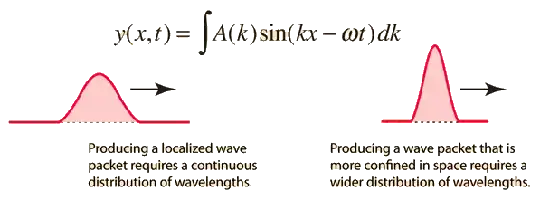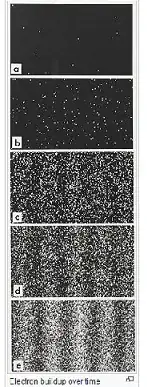Are sound waves “pure waves”? Or does sound also have a particle nature according to wave-particle duality?
4 Answers
Sound waves in air do not exhibit wave/particle duality. They exhibit no particle-like behavior.
- 99,024
In a solid sound waves are just coherent lattice vibrations, and lattice vibrations are quantised like any other oscillator. The result is that in solids we get pseudoparticles called phonons. In this sense sound waves have a wave/particle duality just like matter waves.
I'm not sure how useful the concept of phonons is for liquids because liquids don't have long range order and don't have the well defined vibrational modes that a crystal lattice has. I am pretty sure that phonons are not observed in gases because they don't have even the short range order that liquids enjoy, so as Niels says in his answer sound waves in air have no particle nature.
So whether sound waves have a wave particle duality depends on the medium through which they are propagating.
- 17,377
- 367,598
Sound waves propagate as pressure anomalies in a medium and are the result of many particles interacting with each other. There is no quantum mechanical aspect of sound waves and no particle-like properties in the sense of a wave-particle duality.
EDIT: After some comments and other answers it seems that my answer is at best incomplete when solid media are involved. For example, the comparison of the acoustic phonon modes with Newtonian mechanics does neglect many QM effects. Anyway, I didn't change my original answer, so the comments still make sense.
- 492
Are sound waves “pure waves”? Or sound also has a particle nature according to wave-particle duality?
Waves are described by solutions of wave equations, mainly sinusoidal ones.
There are classical waves where the amplitude of the functions is related to a propagation of energy in a medium, as sound and water waves, and electromagnetic waves which do not need a medium to propagate the energy in space. The mathematics allows to build up wavepackets, from waves.
Have a look at this soliton in a tank of water..Wave packets in classical waves, like this soliton in the water, have some characteristics of particles, i.e. are localized and carry momentum and energy.
Now wave particle duality is a quantum mechanical issue, not classical. The waves in quantum mechanics are not energy amplitude waves. The amplitude of the quantum mechanical wave is related to the probability of detection/scattering/decaying... of "particles" as described in quantum mechanics. It is called a duality because there is a probability distribution which is wave like, shows the sinusoidal interferences, as seen clearly in the double slit experiment of single electrons at a time, where both aspects of the electron are visible.
The accumulation of individual electron footprints, a quantum mechanical probability distribution for the experiment "electron scattering on two slits of specific width and distance apart", shows the interference pattern expected from a wave solution. The single points in the detecting screen have a specific (x,y,z) denoting the impact of a particle. This is the wave particle duality.
It is evident that this probability interpretation does not exist in the classical waves, solitons or not.
On the other hand, the wavepacket solutions are the mathematical tool which allows the description of particles in quantum field theory, which uses the probabilistic wave theory, as wavepackets in space and time. In this formulation the point particles of the standard model, as the electron etc, are a theoretical base represented by sinusoidal solutions, and the real interacting particles are wavepackets in space time built up by these elementary particle probability waves.
So your question can be reversed, wave-particle duality can be described by the use of soliton type solutions, the mathematics similar to classical wave equations.
One should always have in mind that it is the probability that is waving in quantum mechanics, the amplitude corresponds to a probability and not to the energy/mass of a particle.
- 236,935

